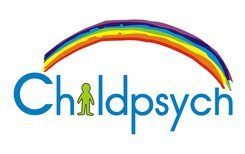Dyspraxia, commonly referred to as low muscle tone, is an impairment or difficulty in the development of coordinated movement to a degree that interferes with academic performance or daily living. These children are often referred to as being “clumsy”, since they tend to bump into objects or trip over their own feet.
What exactly causes dyspraxia is not yet known, but it is thought to be maintained by poor or slow development of those areas of the brain involved in performing sequences of coordinated muscle movements. It affects between 2% and 5% of the population with a ratio of four boys to every girl.
Even though dyspraxia cannot be “cured”, research suggests that early therapy can significantly reduce many of the symptoms.
Possible indicators of dyspraxia:
* Delay in the development of early motor milestones (such as sitting up, crawling, walking).
* Delay in the development of age-appropriate eating skills (e.g. using a knife and fork)
* Delay in the development of age-appropriate ball skills
* Difficulty in learning to ride a bicycle
* Often stumbles into furniture, knocks things over, etc.
* Tendency to avoid Jungle gyms and other climbing apparatus
* Requires help with dressing skills long after peers have mastered this skill
* Handwriting skills are poor in comparison with peer group.
